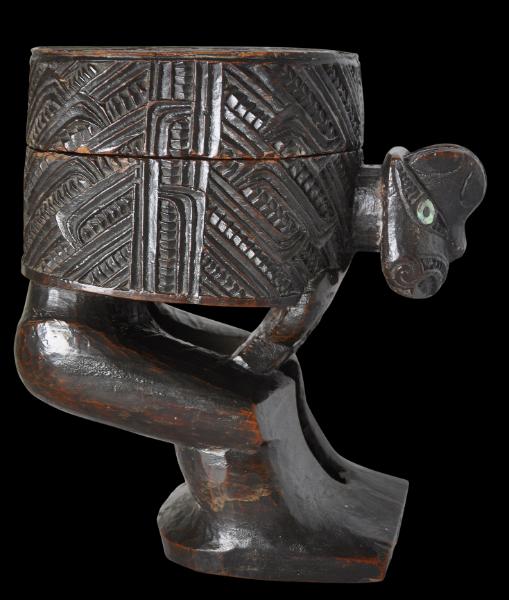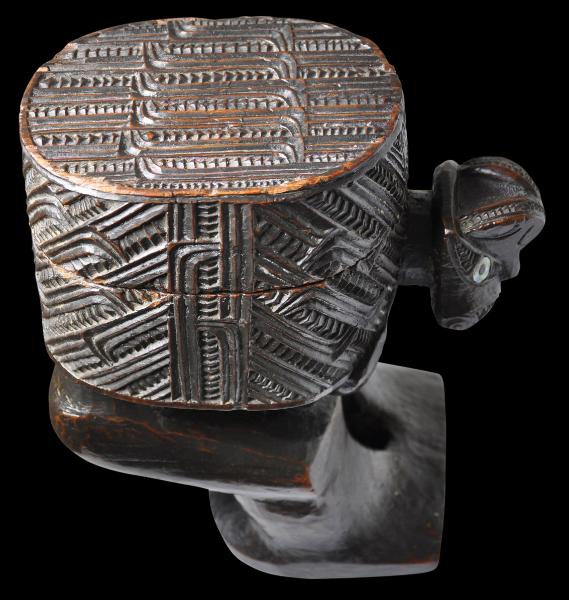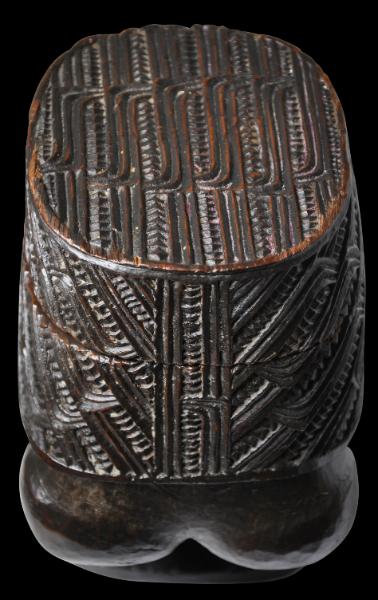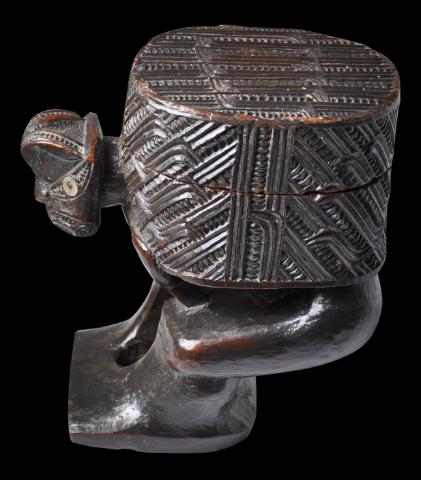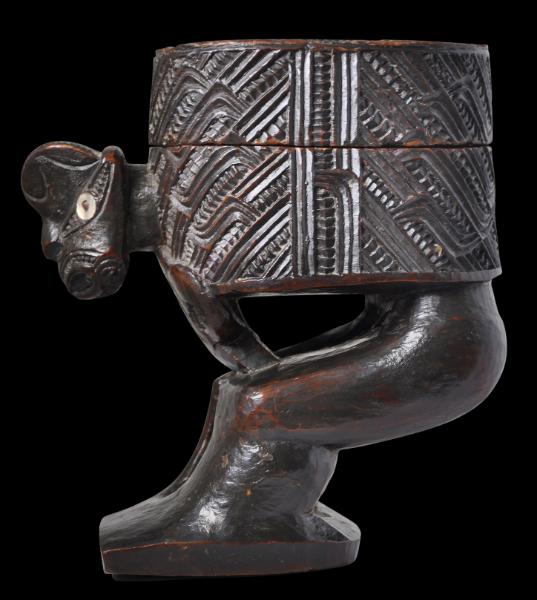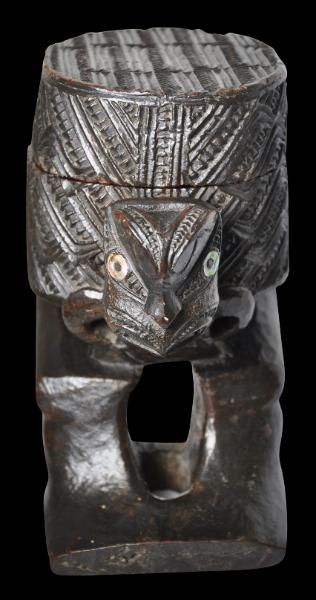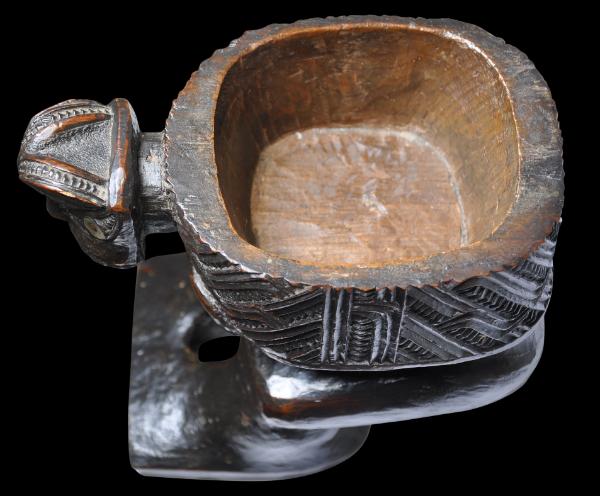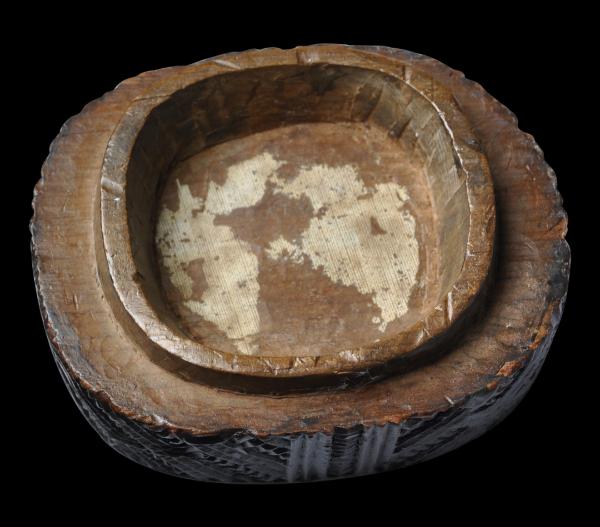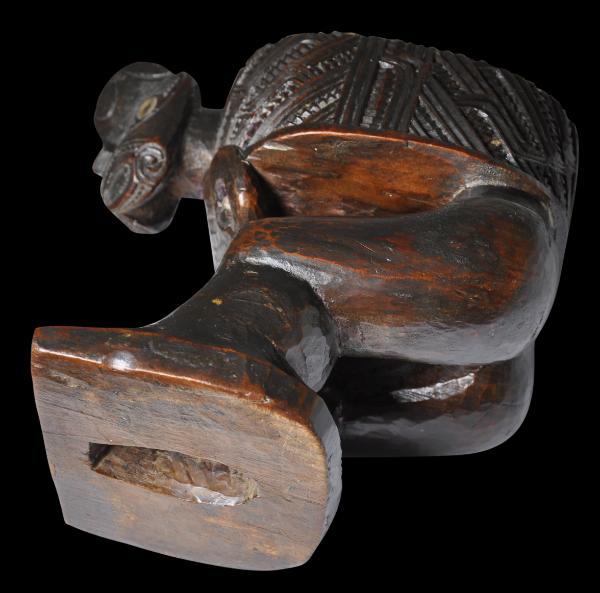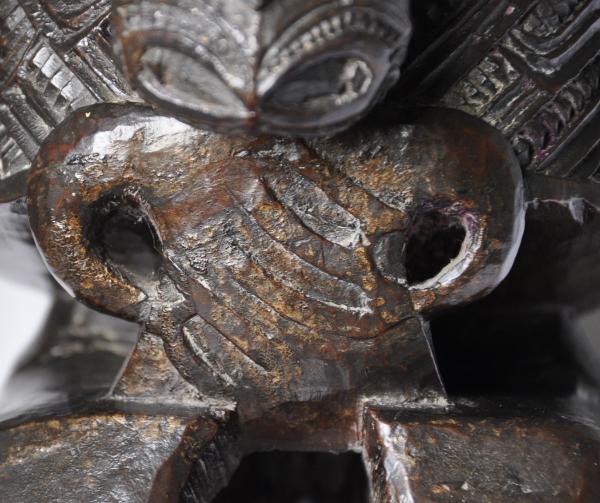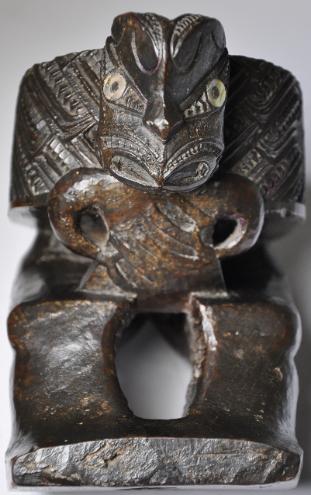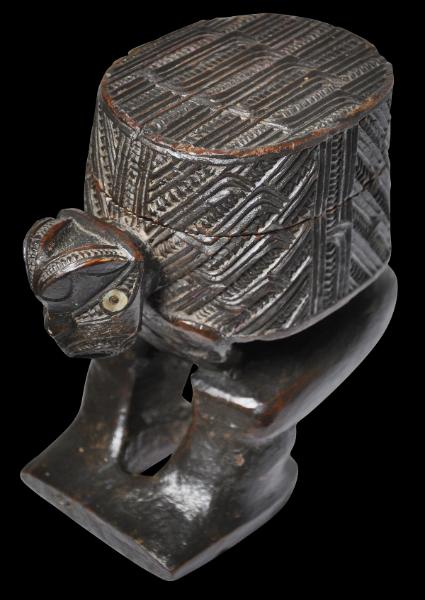
Maori Presentation Box
Wooden Presentation Box
Maori People, New Zealand
19th century
height: 17.3cm,
length: 15.8cm, depth: 9.5cm
This highly unusual presentation or small treasure box comprises a humanoid or zoomorphic figure as the support for the box. The head emerges from the base of the box, and the lid or cover rests on the base almost carapace-like. Additional support comes from the figure’s torso which acts like a column at the front. It is carved lightly with two arms one of which has three digits or fingers. The other has been carved in such a way that the full hand is slightly obscured and only two hands are visible. The eyes on the head of the figure are inset with haliotis shell disks.
Archey (1997, p. 80) reports that figure-supporting boxes are rare. He reproduces a photograph that was given to him in London in 1937 of one example of such a box, commenting that the present whereabouts of the box is unknown. He illustrates another in the Auckland Museum which had been the property of Archdeacon Henry Williams who died in 1867. The British Museum has a substantial collection of Maori items but it does not seem to have an example of a figure-supporting box of its own.
Metal tools were certainly known to the Maoris in the early 19th century but elements of this box suggest that it was carved using stone or shell tools. The incisions are deep but uneven and most noticeably, the interior of the box has been carved out using small and irregular and short chips rather than long strokes that would be associated with a metal chisel. The uneven width of the side of the box and cover also suggest that something other than metal tools were used. Possibly the box is earlier than circa 1820. This is suggested by the use of three digits on the figure’s one fully visible hand, which is one of the indicators of an eighteenth century, pre-European contact provenance.
The slightly encrusted, deep red colour of the patina also suggests significant age. In terms of condition, there are no cracks or repairs, just some minor rubbing of the extremities of some edges. There are remnants of old cotton textile stuck to the interior of the lid.
Overall, this is a fine and very rare example of earlier Maori carving with a little-known form.
References
Archey, G., Whaowhia Maori Art and its Artists, Collins, 1977.
Starzecka, D. C., R. Neich & M. Pendergrast,
The Maori Collections of the British Museum, British Museum Press, 2010.Provenance:
UK art market; almost certainly the item has been in the UK since early colonial times.
Inventory no.: 3016
SOLD

